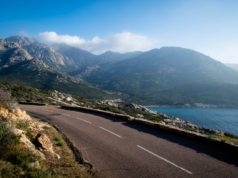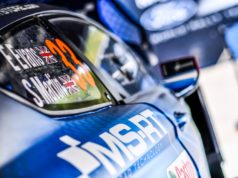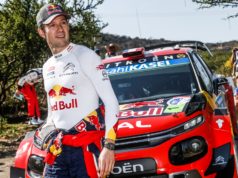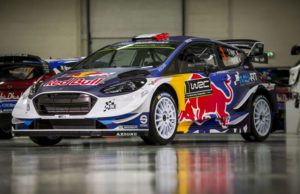When the ADAC Rallye Deutschland was first included on the schedule of the FIA WRC in 2002, the declared objective of the planners was to create a special task for the world rally elite: they were looking for a challenge worthy of the best of the best and a uniquely spectacular feature in the rally to draw maximum spectator numbers. They found this and more on the Baumholder military range, which had become the highlight of the Hunsrück rally over the years. The stages and tests on the Panzerplatte on the 12,000-hectare tank range were to become an identifying element of the ADAC Rallye Deutschland.
The fans love it for its unique arena atmosphere. The teams are in awe of it for the extreme challenges it poses on both the drivers and their machines. More often than not, the winner of the ADAC Rallye Deutschland is determined here. A number of factors have contributed to the cult status of the “Platte”.
Road surfaces
The different road surfaces found here are probably the greatest challenge the Panzerplatte has in store. The predominant surface is concrete interspersed with rough stone. Many sections with extremely rough asphalt topping and some cobblestone passages complete the surface mix on the military range. This means extreme conditions for the tyres. The Panzerplatte becomes the ultimate endurance test for tyres when it is hot.
The Hinkelsteins
The toughness of the Panzerplatte finds its symbolic expression in the infamous “Hinkelstein” boulders bordering the roads in many places. Initially they kept tanks from driving off the track. A rally driver is well advised not to seek contact with these boulders. A WRC car’s speed and the mass of a boulder make for a dangerous mix. The Hinkelsteins have quashed many a driver’s hopes for the podium.
Gina
Talking of Gina and the Panzerplatte, the first thing coming to mind is WRC cars in spectacular flight. The legendary Gina jump propels WRC cars into spectacular leaps of around 40 meters. No wonder then that this is a hot spot popular with both spectators and photographers. But a little detail is unknown to many: Gina is not the name of this particular jump alone but of a whole wavy section of the road reminiscent of the curves of a woman’s body. We certainly need not explain further why the fans chose an Italian actress for the patroness of this place.
Distance and variety
In 2017, on the Panzerplatte there will be 5 stages. Three 3km Sprints and two ‘Panzerplatte long’ Special Stages are waiting for the WRC drivers this year. The marathon feature is usually 40 kilometres long and is usually the ultimate test of the whole rally. Keeping one’s concentration up over the long distance is an extreme challenge. Knowing the fixture is only of limited value since the planners have so many roads to choose from among the vast network on the military range that they can refashion the course somewhat every year. Considering the Panzerplatte’s nigh unlimited variability, there is no chance of ‘business as usual’ here.
Arena feeling
Any fan who has experienced the Panzerplatte knows that nowhere else can you get so much action in a single place as you get here. The hilly settings offer many vantage points from which the view is perfect. You feel as if in an open air arena. Around the Panzerplatte Turm (tower), the highest point on the rally venue, the fans will be able to watch almost all of the Sprint course. It is easy to get from one spectator area to another. The special flair of the Panzerplatte would not be complete without the attractive spectator entertainment programme, including live broadcasts on big video screens, car parades (“corso”), sweepstakes and promotional stands. In recent years, the supporting acts making the Panzerplatte a real happening have included live concerts by top bands.
Rallye Deutschland 2016 WRC / Arena Panzerplatte / Day 2 mit Sieger Seb. Ogier https://t.co/TdVbSEhlBR
— Rally Live 2017 (@rallylive17) November 20, 2016































